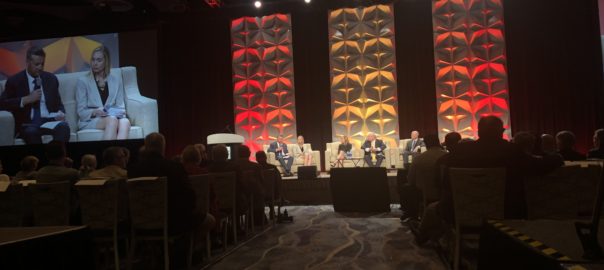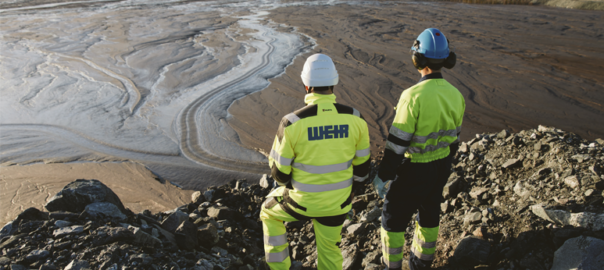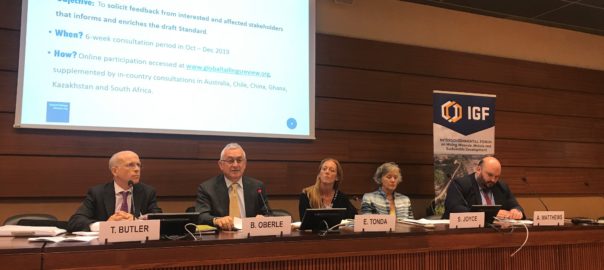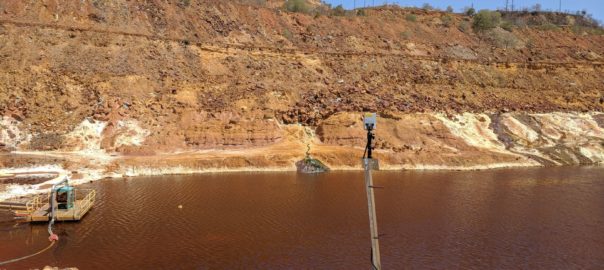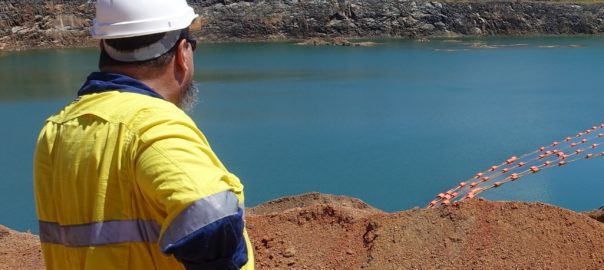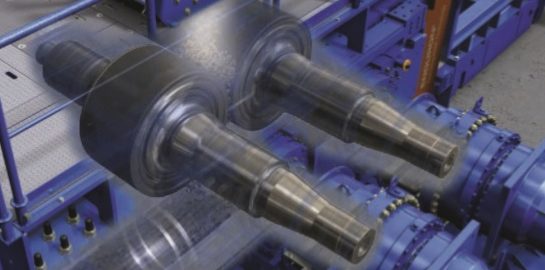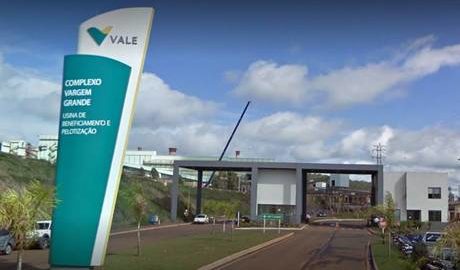The keynote session at the 2020 SME MineXchange Conference and Expo, in Phoenix, Arizona, acted as a display of just how far the industry has come in the battle to improve transparency and shore up environmental, social and governance (ESG) practices in the face of increased scrutiny over the security and safety of tailings dam facilities.
All speakers involved in the keynote session – representing Freeport McMoRan, The Mosaic Company, Newmont and CONSOL Energy – gave a rundown of how many tailings dam facilities they had on their books, how the operation of these dams had changed since recent high profile failures and what they were doing to improve further.
Yet, with the International Council in Mining & Metals (ICMM) nearing the release of its well-documented Global Tailings Review, the session also highlighted how the industry is wary of trying to apply all-encompassing tailings legislation.
Nancy Case, VP, Environment, Health & Safety for The Mosaic Company, revealed that the company has eight active dams, alongside five inactive dams in Brazil and, in New Mexico, it had five tailings management facilities (TMFs).
Since the Corrego do Feijão mine dam collapse just over a year ago, Case said the company had brought in fully-independent engineering firms that had never worked on any of the dams to evaluate the structures and monitoring procedures in place. In Brazil, the company had also amended its operations to fall in line with new regulations.
This process led to several dams being taken out of operation – with additional buttressing and full centreline work carried out where necessary.
Red Conger, President and COO of Americas for Freeport McMoRan, said tailings management was a big challenge the company acknowledged many decades ago.
He spoke about how the company was using technology such as wireless piezometers to monitor tailings dam levels at its operations. At the Bagdad mine, in Arizona, specifically, the company is also using a satellite radar system for monitoring purposes.
Daniel Connell, VP Business Development & Technology, took the technology talk one step further, explaining the company, in partnership with OMNIS Bailey, was working on an innovative technology to convert waste coal slurry into two products: a high-quality carbon product to be used as fuel or as a feedstock for other higher-value applications; and a mineral matter product with potential to be used as a soil amendment in agricultural applications.
The company has, so far, constructed a 2 t/h pilot plant at its Pennsylvania Mining Complex (PMC), and Connell said the company is looking to scale this up to a commercial installation that could not only reduce the amount of tailings the company stores at the facility, but also, potentially, process existing tails.
Out of the four mining company representatives on stage, Newmont declared the most TMFs – 89 in total. Dean Gehring, EVP & CTO, was keen to point out that the gold miner took a “process safety approach” to handling these facilities.
Newmont, as has been well documented, is looking into tailings stacking solutions as well as EcoTails with FLSmidth to reduce its exposure to wet tailings dam facilities.
All representatives agreed technology developments in this space should be treated like those developed to improve safety – where proprietary technology arguments are put on the backburner to help the industry advance.
After each mining company representative had been given a chance to provide some context as to why they were up on stage about to be asked the tricky tailings questions everyone in the industry wanted to know, the moderator’s questions started.
What it revealed, even among just four companies, was the different ways miners operate and manage tailings dams.
Each company had operations in different countries, with different cultures and with different geotechnical requirements.
CONSOL’s Connell, in response to a question about would the company look to decommission any ‘upstream dams’ in its portfolio – constructions that have faced increased scrutiny since the dam failure in Brazil in January – said the coal miner had no intention of stopping these. “We intend for that to be our practice going forward,” he said referring to the dam in question at the PMC.
Mosaic’s Case, meanwhile, said the company had gone as far as taking one tailings dam out of service since the Bruamidinho collapse last year, with decommissioning lined up.
Case was the first one to answer the question on applying a global tailings standard across the industry, explaining it would be very difficult to “enforce” this – most probably because of the differing operating practices seen across the industry.
“There are a lot of differing opinions on those standards,” she said. Depending on the region in question, applying certain standards could impact competitiveness, she offered up as one example of these varied opinions.
This may have been one of the reasons why Freeport’s Conger said the company was supportive of having a global tailings standard, but would withhold judgement on if the miner would follow all recommendations until the detail had come out.
Gehring, meanwhile, compared the new standards to what the gold sector had seen with the cyanide code years ago. “It will take some time to work through,” he said, referring to this example.
What was clear from this session is that any company that follows the guidelines likely to come out of the ICMM’s Global Tailings Review is likely to be considered a leader within the sector. This comes with benefits.
Case said: “Where I do see it (the standards) becoming really beneficial is allowing companies to show they are at the forefront of this.”
This is likely to have a positive impact on the way investors and insurers view such companies, she explained.
“I think it is really going to raise the industry up.”







